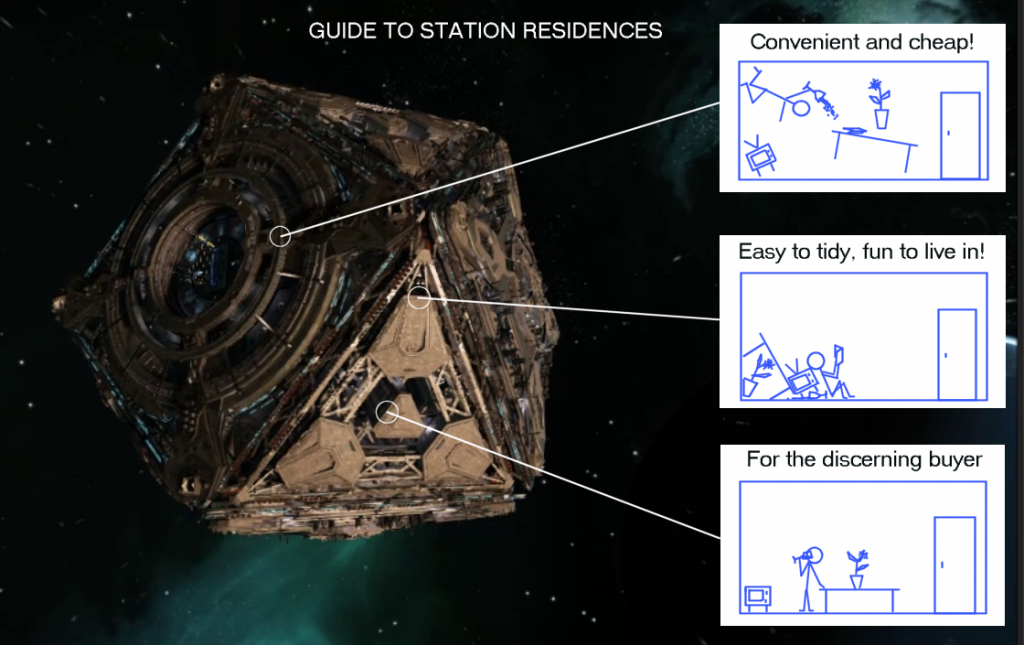I've just worked out, because I could, the internal centripetal G of the Coriolis station and the station isn't rotating fast enough, or it's much bigger than previous estimates.
I assumed that the station was 1km in diameter, as per the original Elite manual.
One complete rotation takes about 80 seconds, about 4.5 degrees s-1
That gives:
Radius (R) = 500 metres
Angular Velocity (Ὠ) = 4.5 degrees s-1
Centripetal acceleration at the outside edge is therefore 0.315 G. Nowhere near enough for the 1G we're after - though it would be quite usable.
To achieve 1G at the outside edge, the Coriolis needs to be significantly larger at the current spin rate.
I've calculated it as follows.
Desired Centripetal Acceleration = 1G
Angular velocity (Ὠ) = 4.5 degrees s-1
Radius (R) = 1590 m
Thus, if the Coriolis is producing 1G at the outside edge, it's over 3km in diameter.
If someone could time the rotation more precisely I can give a more accurate figure.
It would also be interesting to see if people can estimate the size by some cooperative triangulation in the multiplayer, if you can put away your guns for a few moments...
Cheers,
Drew.







